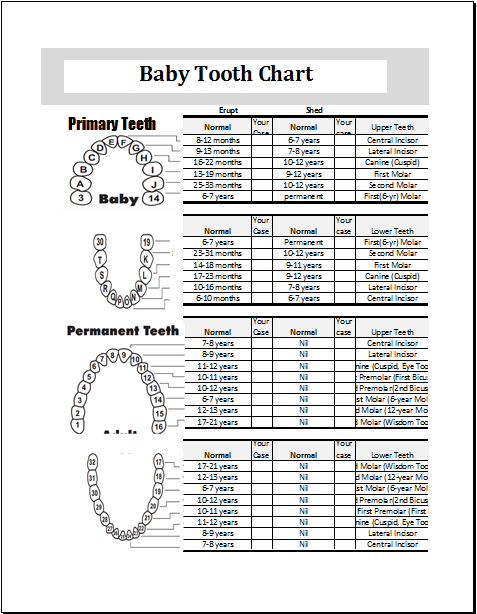A baby’s all first times are always exciting for the parents especially if it is your first baby. A child’s first time sitting is always overwhelming for the parents, his first step is always more exciting for the mother than the baby himself. A child’s first word is the sweetest song a mother ever hears and a baby’s first tooth is the cutest thing to watch.
Teething
Teething is a process in which an infant starts getting his milk teeth also known as the deciduous teeth. These are temporary teeth and are always replaced by permanent teeth beginning at the age of four to seven. Most often, these teeth appear in pairs starting from the canines.
The normal age of teething
Children start teething as early as 6 months of age but if your baby’s delayed till 13 months, you just don’t need to worry because it is the normal duration. Some children start teething at 6 months and some at one year. Both are growing normally.
But if the child shows teething later than that, you must see the pediatrician. Some children are born with teeth. It is a congenital condition and has nothing to do with any abnormality.
The normal sequence of Teething
There is a sequence of teething in infants but as mentioned earlier, your child may show slight variation in the age of eruption which is quite acceptable within certain limits.
Here is the sequence of teething and ages at which a certain pair appears. Let’s have a look at this;
Lower incisors
Lower canines are two in number and appear first in an infant at the age of 6 months.
Upper incisors
They appear right after lower canines at the age of 7-8 months. They also appear in pair.
Upper lateral canines or cuspids
Each upper incisor is present lateral to the upper canines and they appear at the age of 10 months.
Lower lateral canines
They have the same arrangement around the lower canines at appear in pair at 10 to 11 months.
First molar teeth
They are two pairs lateral to incisors and appear at 14 months of age.
Second molars
They are also four in number and appear at 2-3 years of age.
First permanent molars
These two pairs appear at the age of 6 years.
The chart
A baby gets his/her first tooth normally at the age of six months and till he/she gets three all 20 teeth are completed. But the first tooth is one of the milestones in the baby’s first year that needs to be recorded. It is a joyous time and the baby is given some token or gift so that this time is remembered throughout his/her life. As a parent too, you should record this moment with all the detail like the time, date, and place where the baby got the first tooth.
A baby teeth growth record does not just hold the information about how and when the baby got each tooth but also when your child starts losing his first tooth and every tooth after that. It also holds information about when the primary teeth are grown and she’d and when permanent teeth erupt.
This teeth eruption chart holds the normal growth age for the growth and shedding of each tooth and you can insert the age your child achieved that milestone, this enables you to evaluate if your child is growing normally or if you need to consult a doctor.
Your baby’s teething record will most likely resemble your childhood record. Although every kid has a unique pattern it usually runs in the family to follow a set pattern.
- Mental Health Evaluation Forms
- Forms Used by Pediatricians
- Various Forms Related to Pregnancy Verification
- Common Forms Used by ENT Specialists
- Patient Registration Confirmation Messages
- Quotation Letter for Medical Services
- Mental Health Letter by Doctor
- Excuse Letter for Absence due to Medical Checkup
- Response Letter to Feedback on Improvement in Hospital
- Letter to a Mother Who Miscarried
- Patient Feedback Letter Complaining on Issues or Incidents
- Letter to Family about Miscarriage
- Patient Constructive Feedback Letter for Quality Care Improvement
- Registered Nurse Designation Letter
- Patient Feedback Letters
